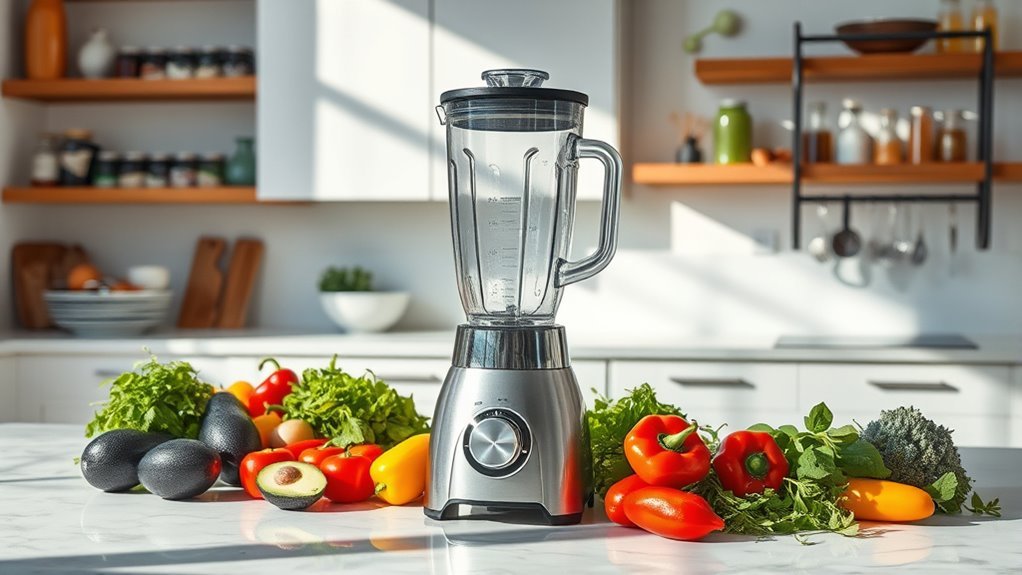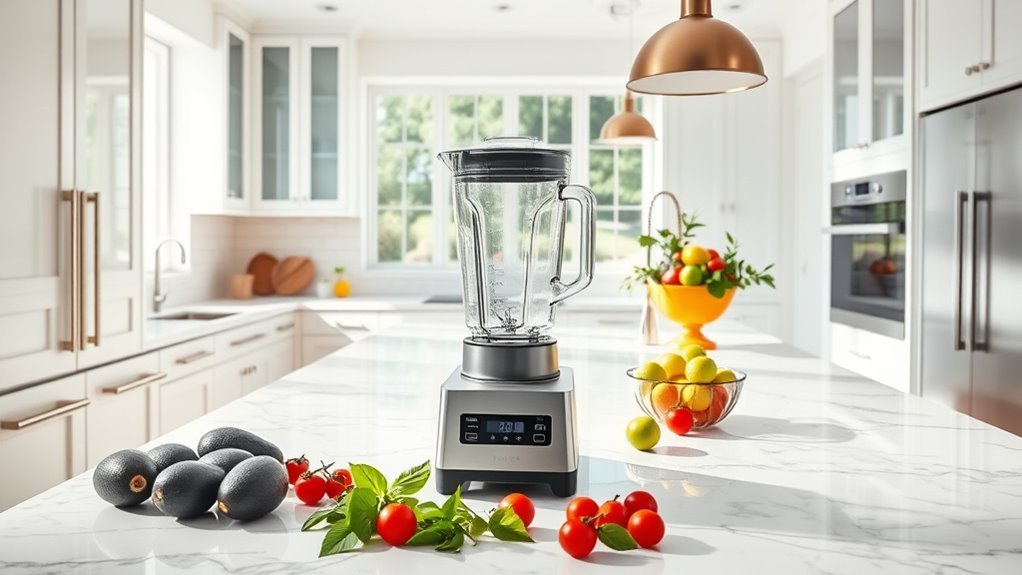We’ll teach you to master sauce blending through strategic pulsing – it’s all about control. Start with ¼ to 2-second bursts, adjusting duration based on desired texture. Room temperature ingredients blend more evenly, while gradual liquid addition prevents over-processing. Match blending speed to viscosity: higher for thin sauces, lower for thick ones. Whether crafting chunky salsas or silky cream sauces, precise pulsing technique transforms ordinary ingredients into restaurant-worthy creations. The perfect sauce awaits in the details.
Understanding the Power of Pulse Control in Sauce Making

When it comes to achieving sauce perfection, mastering pulse control isn’t just helpful – it’s absolutely critical. We’ll show you why this game-changing feature is your secret weapon for precise control over texture and consistency.
Let’s get real: over-blending is the death of great sauces. The pulse function lets us break down ingredients gradually, maintaining that sweet spot between smooth and chunky. For salsas and pestos, we’re talking controlled bursts that preserve texture while ensuring even distribution of herbs and spices.
Think of pulsing as surgical strikes – quick, deliberate, and purposeful. We start with larger ingredients, using short bursts to achieve our desired consistency. High-performance blenders, with their powerful motors, can handle tough ingredients with ease, making them ideal for sauce making.
It’s all about maintaining control, folks. No more accidental purees when you’re aiming for chunkier results.
Essential Techniques for Pulse-Based Sauce Blending
Now that you’ve grasped the power of pulse control, let’s master the techniques that’ll transform your sauce game.
Start with firm ingredients, pulsing in short ¼ to 2-second bursts for controlled blending. We’re building texture here, not obliterating it.
Room temperature ingredients are non-negotiable – they’ll blend more evenly and preserve that coveted rustic texture.
As you progress through the blending process, gradually add liquids while pulsing to nail your desired sauce thickness. Trust us, there’s no coming back from over-blending.
Want to elevate your flavor profile? Use the Pulse function to finely chop herbs and vegetables.
This technique creates layers of texture that’ll make your sauce sing – think restaurant-quality results without the culinary degree. Additionally, using a high-performance blender can enhance the blending efficiency, ensuring optimal flavor and texture in your sauces.
Common Sauce Types and Their Ideal Pulse Patterns

Understanding the right pulse pattern for each sauce type is like learning a secret handshake – it’ll get you into the club of perfect textures every time.
Let’s break down the specific recipes: For chunky salsas, we’ll use short bursts to control the speed and maintain varied textures. When making pesto, we’ll pulse to blend ingredients while preserving that vital nutty bite.
Creamy sauces demand a two-step approach: pulse to combine, then steady blend for that smooth finish.
For hummus and other dips, we’ll pulse gradually to control the desired texture. And don’t forget salad dressings – strategic pulsing creates perfect emulsification while keeping those flavor-packed ingredients distinct.
Master these patterns, and you’ll nail the perfect consistency every time.
Timing and Speed Adjustments for Different Sauce Textures
The art of perfect sauce blending hinges on split-second timing and precision speed control.
We’ll master the delicate balance between pulsing and continuous blending to achieve your desired consistency.
- For chunkier sauces, use the Pulse function in ¼-second bursts, gradually increasing duration as needed.
- Match blending speed to viscosity – higher speeds for thin sauces, lower speeds for thick mixtures.
- Add liquids slowly while blending to maintain control over texture development.
- When incorporating solid ingredients, pulse for 1-2 seconds max to prevent over-blending.
Preventing Over-Processing With Strategic Pulsing

While sauce blending might seem like a straightforward task, mastering strategic pulsing makes the difference between perfectly textured results and an over-processed mess.
We’ll show you how to maintain some texture and avoid turning everything into liquid.
Let’s start with short bursts – ¼ to 2 seconds on the Pulse button. This technique keeps larger pieces intact while blending ingredients to your desired consistency.
For chunky salsas, we’ll pulse tougher ingredients first, then gradually work toward smoother elements. Monitor the blending process closely; you can’t un-blend what’s already pulverized.
Strategic pulsing gives you ultimate control. Watch through the blender’s lid and stop when you’ve achieved perfect sauce consistency.
Trust us – your taste buds will thank you for those intentional chunks.
Maximizing Flavor Through Controlled Blending Methods
Mastering controlled blending methods reveals flavor dimensions you’ve never experienced before.
Let’s release maximum taste through strategic pulsing and texture adjustments. We’ll experiment with short bursts to avoid over-blending while building your perfect flavor profile.
- Start with firm ingredients using the pulse function – this creates your foundational texture
- Gradually add liquid ingredients to achieve your desired consistency
- Use controlled blending methods until ingredients are completely incorporated but still distinct
- Monitor texture through strategic pulses, keeping herbs and spices visible
Frequently Asked Questions
What Does Pulse Mean When Blending?
Like a heartbeat in our kitchen, we’ll use pulse function for controlled bursts of power, giving us precise texture control when blending ingredients. It’s perfect for achieving our desired consistency without over-processing.
What Does “Pulse Until Smooth” Mean?
We’ll use short bursts of blending speed on our kitchen gadgets, repeatedly pressing and releasing the pulse button until our ingredient combinations reach the desired smooth texture and sauce consistency.
What Does Pulse Mean on the Ninja Blender?
The Pulse button on our Ninja blender lets us control blending in short bursts, giving us precise texture control whether we’re making chunky salsas or gradually working towards smooth, creamy sauces.
What Does Pulse Mean on a Juicer?
We use the pulse setting on our juicer for short bursts of power, giving us control over ingredient blending and consistency while preventing overheating and ensuring even distribution of fibrous materials.

